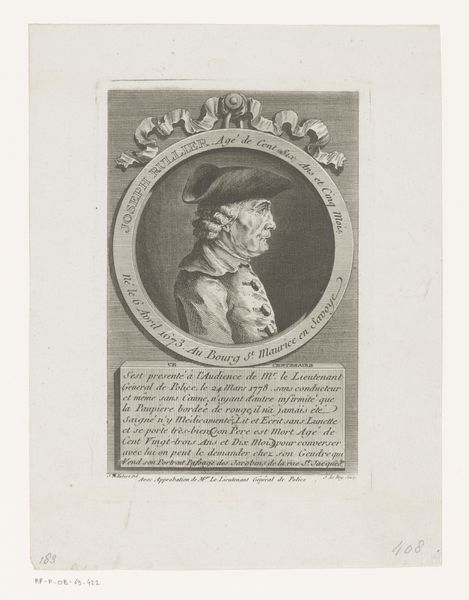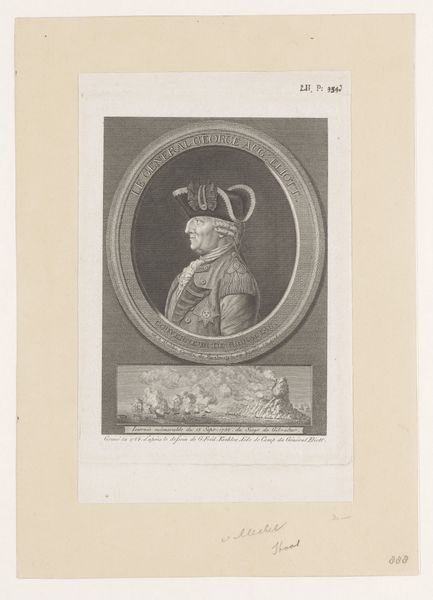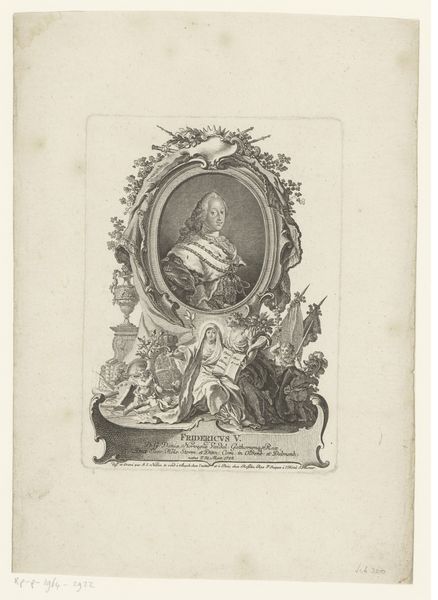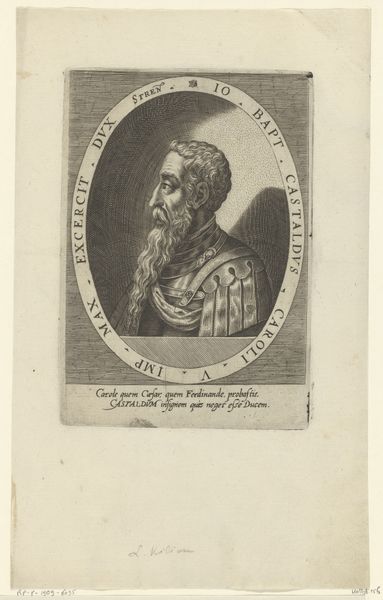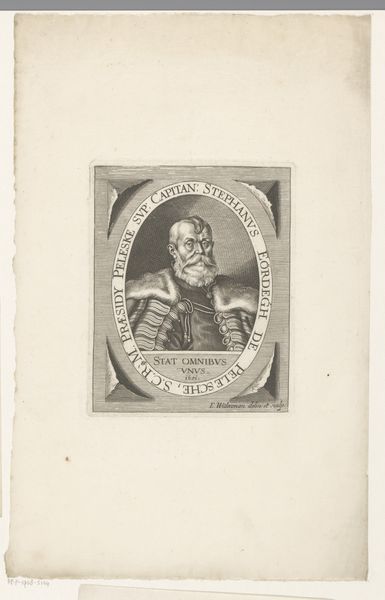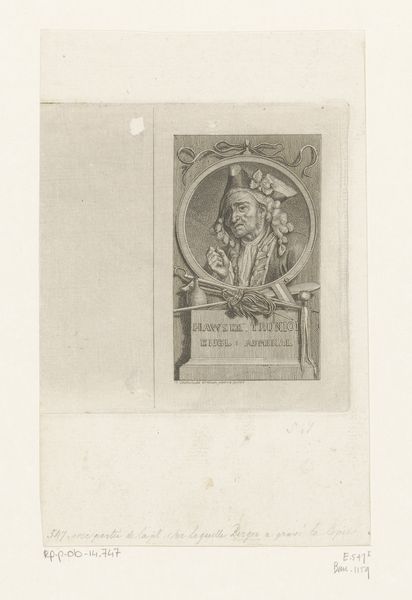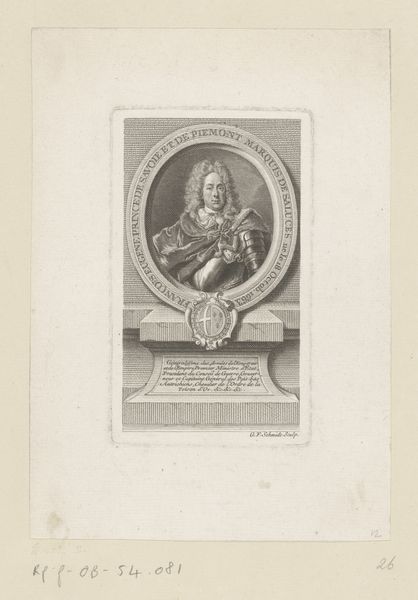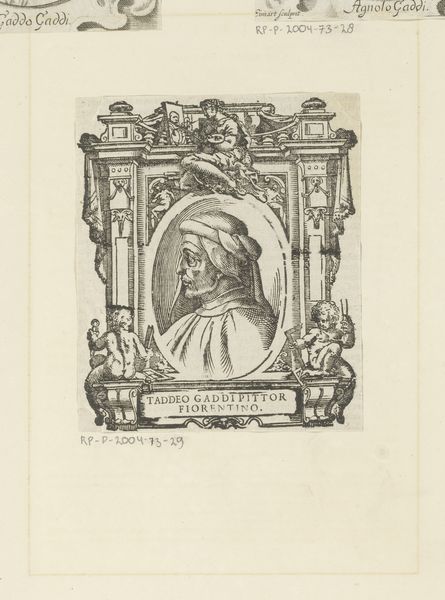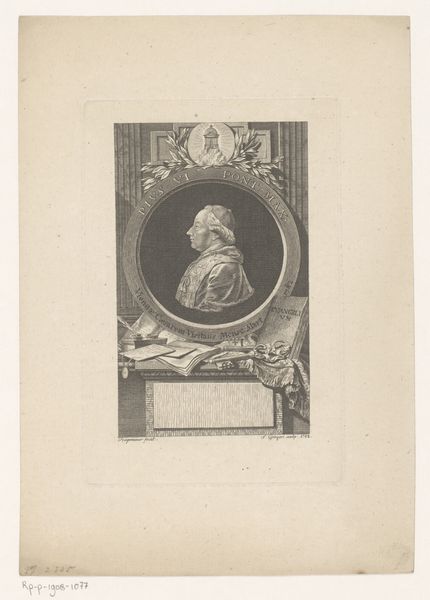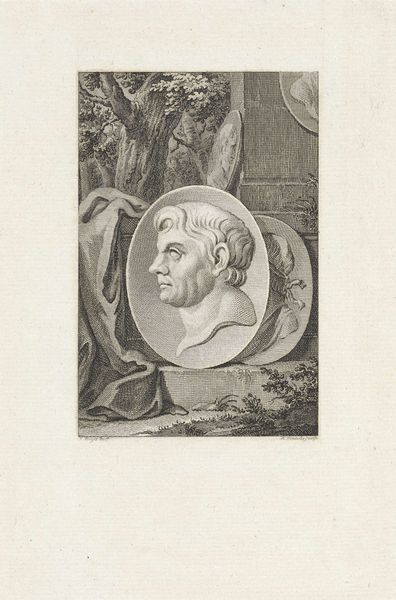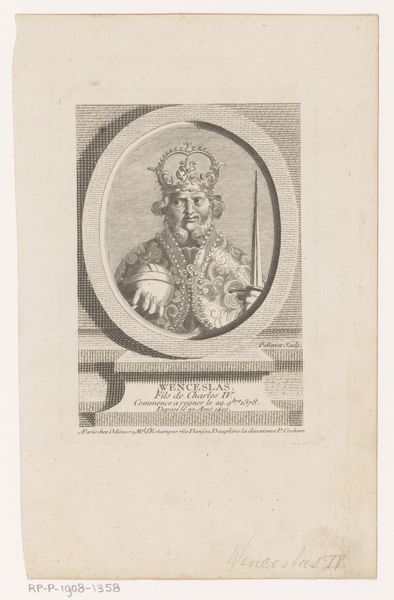
Dimensions: height 168 mm, width 112 mm
Copyright: Rijks Museum: Open Domain
Editor: So, here we have Reinier Vinkeles’ print, "Portret van Wolfert I van Borselen," created sometime between 1783 and 1795. It's an engraving and etching and quite small. I am really interested in the duality here – a formal portrait juxtaposed with such a chaotic scene below. What jumps out at you? Curator: The portrait, framed like a medal, presents Wolfert as an emblem of power. But it's the scene beneath that really pulses with symbolic weight. It shows a historical episode; notice how figures flee or are hung? Images such as these have power in cultural memory, particularly when presented with this much symbolism. This recalls justice, but is justice always fair? How might an image like this shape public perceptions of power and governance? Editor: That is a great point. I hadn't really considered it like that before. Curator: Visual symbols embed complex narratives, layering associations and influencing emotional responses. Can we unpack those cultural memories or even subconscious fears this might evoke in its contemporary viewers? Think of public executions and the instability of social order... Do the hanging figures evoke ideas about order or chaos? Editor: Definitely evokes chaos, and perhaps warns about the consequences of upsetting the existing order, at least from the perspective of those in power. It is definitely heavy. Curator: And how interesting it is that the engraver created the original work well after his death... cultural memory shaping legacy. The artist is no longer separated from the patron! Editor: It gives a totally different perspective when you consider all these intricate layers. It definitely enhances my interpretation of the print, viewing it with symbolic significance. Curator: Precisely. The visual language echoes throughout history. I, too, walk away seeing the image with different eyes. Thank you!
Comments
No comments
Be the first to comment and join the conversation on the ultimate creative platform.



